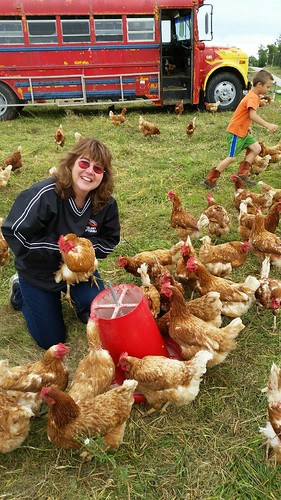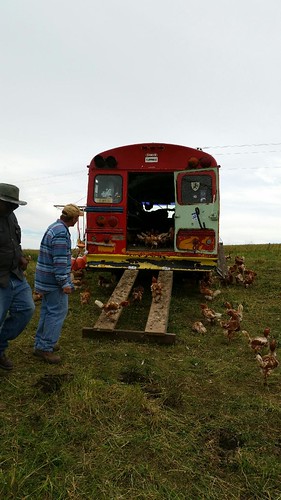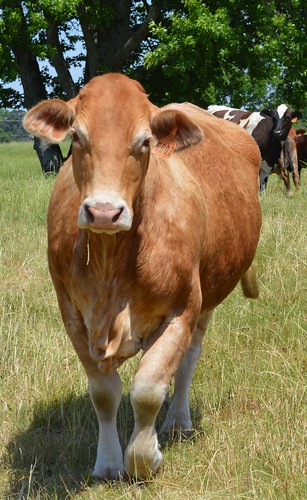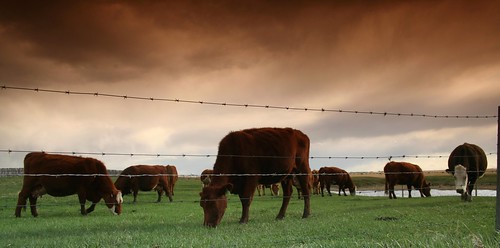
The hens rotate 72 hours behind the cattle herd to provide insect control, and the bus provides easy mobility from paddock to paddock.
When bison roamed the Great Plains, prairie chickens and other fowl played an important role as the clean-up crew. They would follow the herds feasting on the larvae in bison manure.
In Doug Darrow’s 160-acre mob grazing system near Oxford, Iowa, his 300 chickens have the same job, but they ride in style from paddock to paddock in an old school bus that doubles as a chicken coop. “This means there are fewer flies to pester the cows,” said Darrow. This natural form of pest control, improves herd health and rate of gain, while providing another income source from the eggs laid by the clean-up crew.
Along with serving as mass transit for the chickens, the bus doubles as a nightly shelter protecting them from predators.
“Grazing experts from the USDA’s
Natural Resources Conservation Service (NRCS) visited with Darrow about grazing systems in 2004,” said Jess Jackson, former grazing specialist and current NRCS National Partnership Liaison. “Years later when he was ready to move to a high-density grazing system, we met to lay out the fences and watering system, and developed a plan to implement the new system,” he said.
About a year after converting 80 acres of cropland into pasture, Darrow was approved for a 2014
Environmental Quality Incentives Program (EQIP) contract through his local NRCS office in Johnson County, Iowa to install fencing and the watering system. The fencing was used to divide his pastureland into 2.28-acre paddocks. The cows are moved from pasture-to-pasture on a 60-day rotation.
Each pasture is grazed for one day, and rests for the remaining 59. Darrow’s chickens follow in the same rotation, but three days behind the cow-calf herd.
The high-density, or mob grazing system, also promotes soil health and nearly eliminates erosion by preventing overgrazing. “By only grazing one paddock per day, the cows don’t have time to overgraze the grass and clover pastures,” said Jackson. “With all the roots and many of the leaves intact, the plants have the strength to quickly replenish themselves.”
“And, the undisturbed root system of the continuous pasture allows microorganisms to flourish, improving soil health and increasing organic matter,” said Iowa NRCS State Soil Scientist Rick Bednarek.
Darrow made a choice to convert all his cropland acres to a mob grazing-chicken ranch, a time-intensive system requiring daily attention. But for Darrow the benefits far outweigh the time requirements.
“I’m trying to mimic nature,” said Darrow. The system eliminates his need for fertilizer and other inputs, saving costs, machinery time, and preventing runoff of commercial inputs.

The bus contains 300 laying hens purchased from local confinements.



































